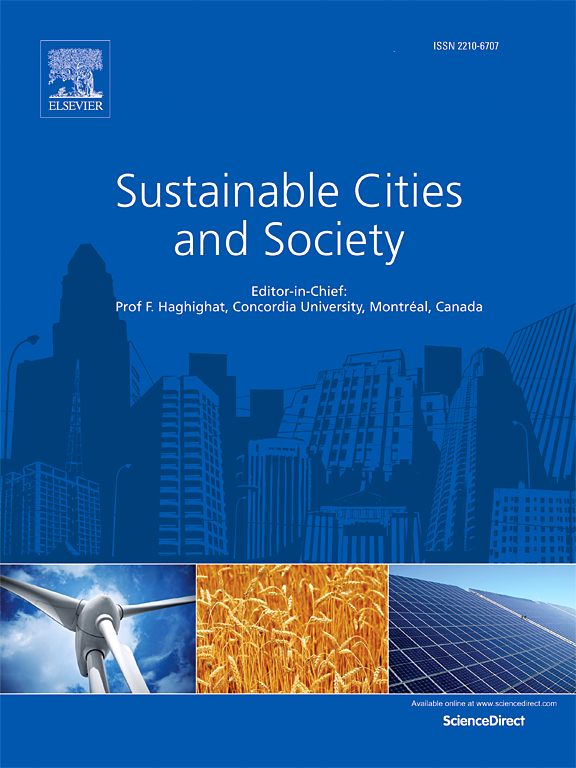Quantitative analysis of differences in cooling effect and efficiency after changes in Green Infrastructure Types (GIT)
IF 10.5
1区 工程技术
Q1 CONSTRUCTION & BUILDING TECHNOLOGY
引用次数: 0
Abstract
Green Infrastructure (GI) is heavily used in urban planning as it can provide better thermal comfort conditions in urban spaces and can mitigate the morbidity and mortality associated with urban heat waves. Later, the concept of Green Infrastructure Typology (GIT) was proposed for urban heat wave assessment. However, we are not aware of studies on the wider benefits of GITs, such as the cooling effect and the cooling efficiency considering water requirement. To fill the gap in prior studies, this study quantitatively analyzed the cooling effect, transpiration rate, and cooling efficiency after GIT type conversion using ENVI-met. The results show that even if the green space location and ratio are the same, there are large differences in cooling effect, transpiration rate, and cooling efficiency between GITs. For PET, the cooling effects of the low, medium, and high vegetation GITs with 60 % green space ratio are 1.2 °C, 1.3 °C, and 2.0 °C, respectively. In the high vegetation GITs with 10 % shrubs and 30 % trees (PV6,8,10), the continued addition of 60 % shrubs and 50 % trees (PV11) resulted in an average reduction of 0.6 °C in Ta and 1.8 °C in PET. The low vegetation GITs have the lowest cooling effect but the highest cooling efficiency.
求助全文
约1分钟内获得全文
求助全文
来源期刊

Sustainable Cities and Society
Social Sciences-Geography, Planning and Development
CiteScore
22.00
自引率
13.70%
发文量
810
审稿时长
27 days
期刊介绍:
Sustainable Cities and Society (SCS) is an international journal that focuses on fundamental and applied research to promote environmentally sustainable and socially resilient cities. The journal welcomes cross-cutting, multi-disciplinary research in various areas, including:
1. Smart cities and resilient environments;
2. Alternative/clean energy sources, energy distribution, distributed energy generation, and energy demand reduction/management;
3. Monitoring and improving air quality in built environment and cities (e.g., healthy built environment and air quality management);
4. Energy efficient, low/zero carbon, and green buildings/communities;
5. Climate change mitigation and adaptation in urban environments;
6. Green infrastructure and BMPs;
7. Environmental Footprint accounting and management;
8. Urban agriculture and forestry;
9. ICT, smart grid and intelligent infrastructure;
10. Urban design/planning, regulations, legislation, certification, economics, and policy;
11. Social aspects, impacts and resiliency of cities;
12. Behavior monitoring, analysis and change within urban communities;
13. Health monitoring and improvement;
14. Nexus issues related to sustainable cities and societies;
15. Smart city governance;
16. Decision Support Systems for trade-off and uncertainty analysis for improved management of cities and society;
17. Big data, machine learning, and artificial intelligence applications and case studies;
18. Critical infrastructure protection, including security, privacy, forensics, and reliability issues of cyber-physical systems.
19. Water footprint reduction and urban water distribution, harvesting, treatment, reuse and management;
20. Waste reduction and recycling;
21. Wastewater collection, treatment and recycling;
22. Smart, clean and healthy transportation systems and infrastructure;
 求助内容:
求助内容: 应助结果提醒方式:
应助结果提醒方式:


